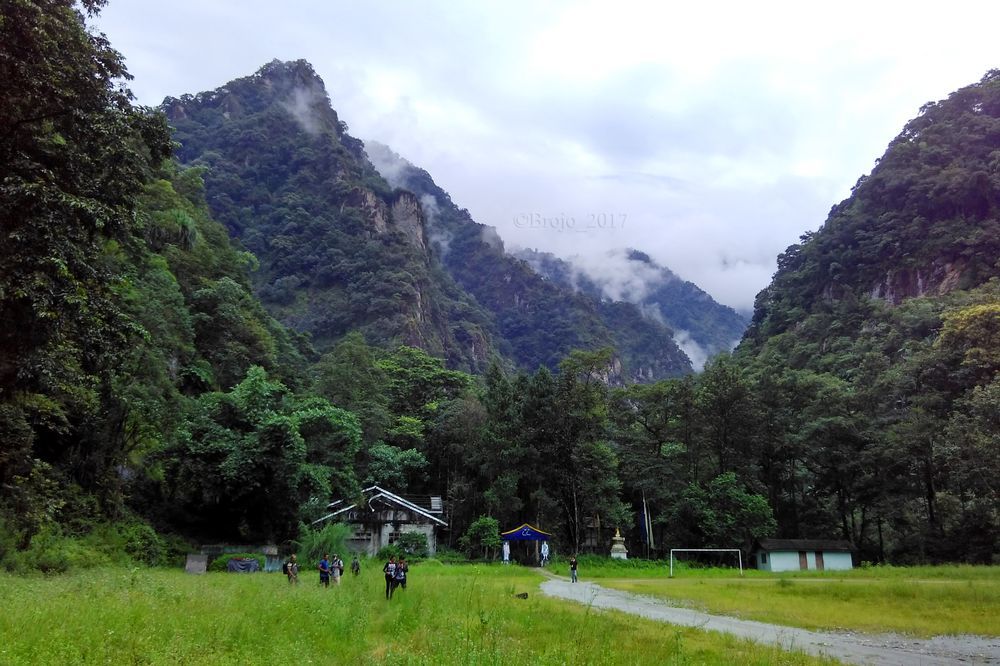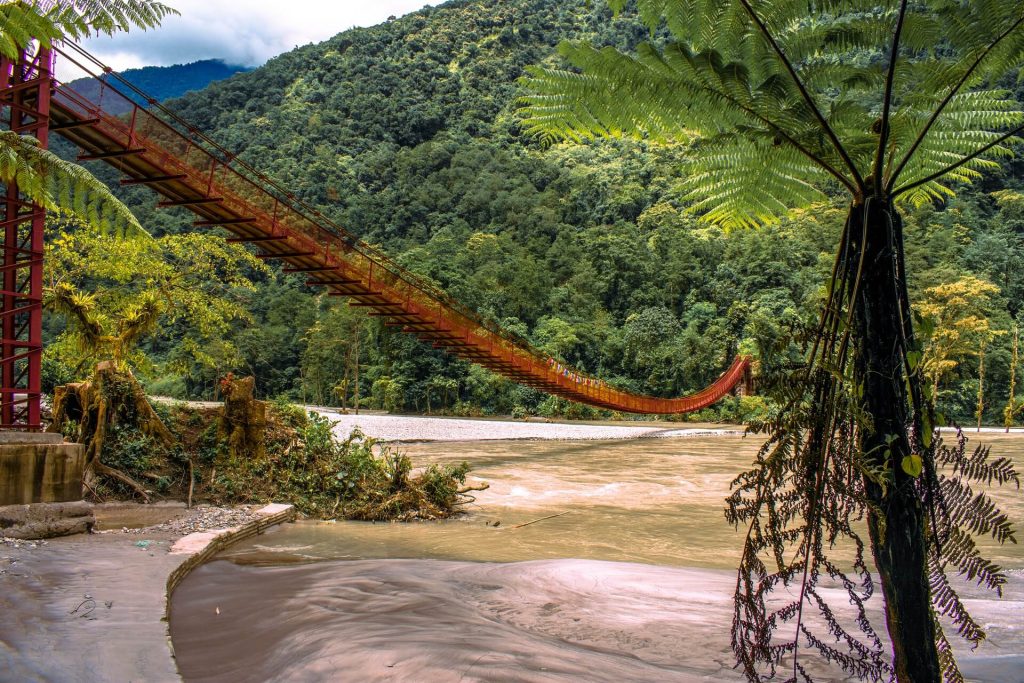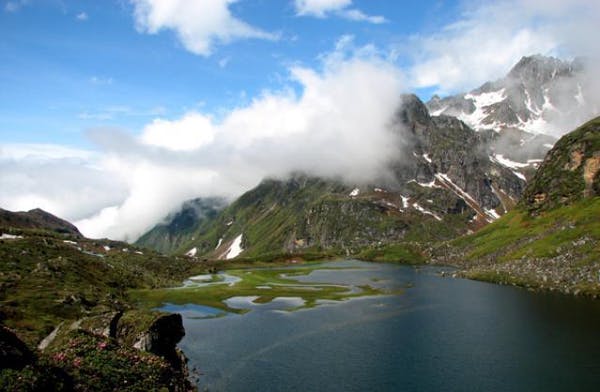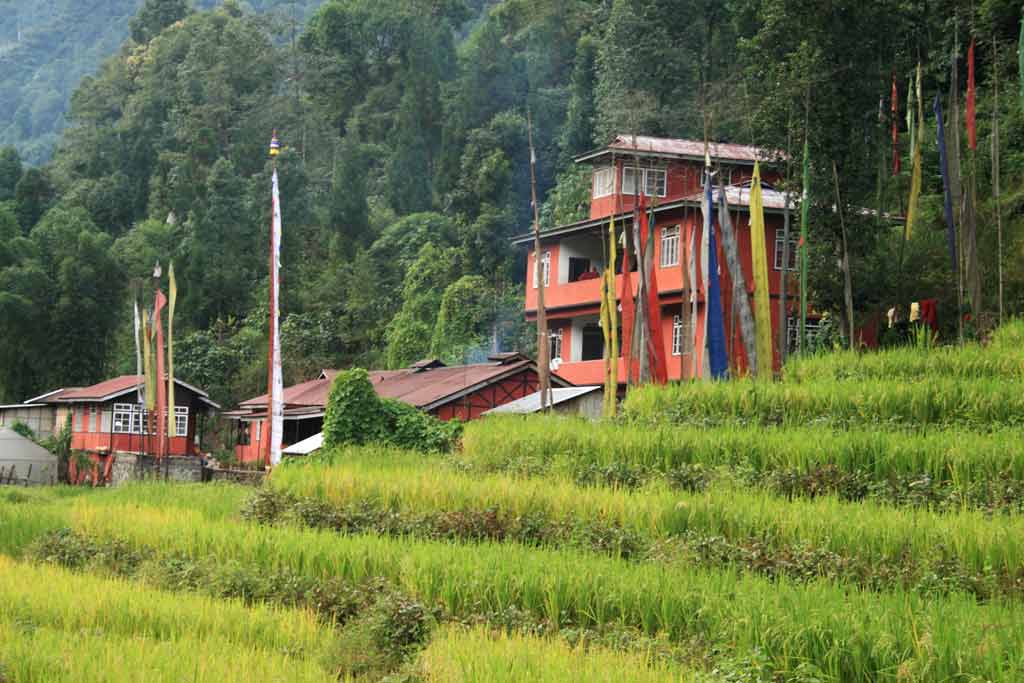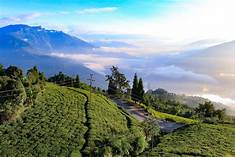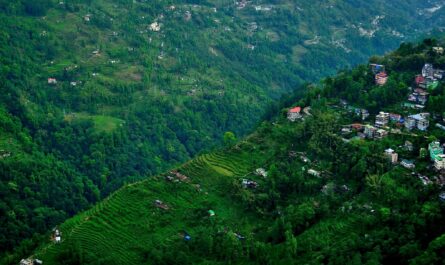North Sikkim’s Dzongu is a triangular area. It is bordered on the south by the Teesta River, on the north by the Tholung Chu River, and on the west by tremendous mountains. It is located on the edge of the Kangchenjunga Biosphere Reserve.
Dzongu — The Lepchas’ Little-Known Paradise
Dzongu has been designated as an official reserve for the Lepcha people [3, Sikkim’s indigenous people]. The Lepchas have lived in this area for generations and have deep links to nature. An appreciation for the magnificent mountains, dense forests, and emerald-colored Teesta River may be fostered by learning their culture, customs, and language.

Because there is minimal visitor activity in the area, it appears to be practically unspoiled. It is scarcely inhabited, with thick vegetation covering the majority of the land. Near the settlements, rice fields and cardamom plantations may be observed.
Sikkim has recently become a popular tourism and travel destination for both local and international visitors. Over the last decade, and maybe longer, the number of tourists has steadily increased. The state administration recognises that tourism is the most fundamental source of revenue for this otherwise isolated state.
Law and order, as well as infrastructure, are properly maintained. Constantly promoting eco-tourism and promoting fresh locations with the participation of the local community is a governmental policy that has yielded enormous advantages and has placed the state on the international tourist map. It’s also helped that I’ve been featured in foreign publications like Lonely Planet. Aside from the widely popular attractions such as Gangtok’s gorgeous capital city, Tsongo Lake, and Nathula Pass, Pelling in the west, and Lachung in the north, Sikkim has a plethora of lesser-known yet naturally awe-inspiring locations strewn over its length and width.. One such unimaginably pristine part of it is Dzongu.
About
A sparsely inhabited (4513 according to the 2004 census) large triangular territory in the north district, bounded on the southeast by the Teesta River and on the west by the Kanchenjunga range of mountains, and designated as a Lepcha natural reserve in Dzongu. It is fully included inside the Kanchenjunga biosphere reserve, with its furthest reaches deep within Kanchenjunga national park. The constant throngs of visitors visiting North Sikkim sites like Lachen, Lachung, Yumthang valley, and Gurudrongmar Lake on predetermined routes out of Gangtok often ignore and skip Dzongu, which remains a treasure hidden in plain sight.
Lepchas
The Lepchas are Sikkim’s indigenous people, and their name means “children of the snowy mountain” or “children of the gods.” They claim they are natural descendants of the mountains and have not moved in from other areas to avoid calamities or prosecution, as other tribes have.
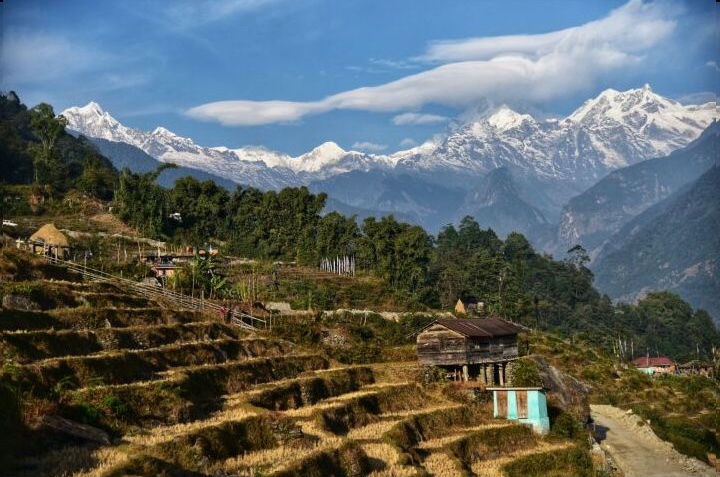
The Lepchas are a peace-loving, humble, and generally peaceful race with a population of around 50k dispersed throughout portions of Sikkim, Nepal, Bhutan, and West Bengal. They revere Mother Nature in all of her manifestations. The Kanchenjunga is their mother guardian, and they revere the rivers, lakes, forests, and waterfalls.
The Lepchas believe that their very life is based on the protection and adoration of Kanchenjunga. And if a person lives a life dedicated to fulfilling his responsibilities to nature and performs great actions, he will be rewarded with an afterlife of endless pleasure at Mayal Lyang. Heaven lies tucked away in the Kanchenjunga slopes. Dzongu is supposed to be the bridge to Mayal Lyang, the location where all Lepchas are said to have originated and will eventually reach, according to Lepcha beliefs and tradition. Dzongu has been a designated natural habitat and reserve for the Lepchas since the 1960s for this reason.
How to reach Dzongu
Mangan is easily accessible from Gangtok through specialised leased or shared vehicles. Hired vehicles are accessible for many communities in Dzongu from Mangan. Some communities have shared jeeps, although they are few, with just 1 to 2 available each day.
Mangan prepaid vehicles may be obtained at kiosks outside NJP or Bagdogra in Siliguri. It is not necessary to pass via Gangtok while travelling from Siliguri. Instead, there is a separate route that connects Singtham and Mangan.
For a Siliguri-Mangan drop, a car like the Bolero is estimated to cost approximately 4k. Alternatively, for around 2k, one may take a shared vehicle to Singtham and then hire a car to Mangan or Sankalang from there. Singtham-Mangan is served by shared jeeps, which cost approximately Rs 200 per passenger.
Best time to visit Dzongu
Dzongu is accessible throughout the year, although the best time to visit is between late February and early June. You should avoid the monsoon months of mid-June to September since it rains heavily in the region, increasing the risk of landslides or a bridge being swept away.
Winters are brutally cold, with snowfall in some of the higher settlements. But it’s the viewpoints that stand out the most. Apart from climatic concerns, Dzongu hosts a number of annual festivities for anyone interested in experiencing Lepcha heritage firsthand.
Suggested Duration of Dzongu Trip
There is no suggested time period for a site as unspoiled as Dzongu, which has so much to give, to be reasonable to the region. It is ideal to come and stay for a week.
If time is of the essence, a two-to-three-day excursion to one of the villages will not disappoint. It would just make you want to return in the end. Dzongu can also be linked to the rest of Sikkim or North Sikkim, if that is more convenient. Alternatively, one might make a special journey to Dzongu, which is a destination deserving of attention in every manner.
How to Reach
Dzongu is around 70 kilometres from Gangtok, the state capital. It is easily accessible by car. To visit Dzongu, you’ll need permission from the Sikkim government. Permission can be obtained through the Gangtok Tourism Office or the Delhi Tourism Office. Before arriving in Sikkim, tour providers can arrange for permissions.
By Airplane
Bagdogra, West Bengal, has the closest airport. From here, one may either take a pre-paid cab (from the airport) or travel to Siliguri in search of a shared taxi. This airport is served by Indian Airlines, Jet (through Jet Konnect), and Go Air. One may either take a cab up to Gangtok, which takes approximately 4 hours, or a direct taxi to Dzongu, which takes about 5 hours and takes the route via Singtam.
By Train
New Jalpaiguri Railway Station, which is not far from the airport, is the nearest rail station. From here, one may take a cab to Gangtok or directly to Dzongu. Bus services are available from here to Gangtok.
By Taxi
An exclusive taxi from the airport/railway station to Gangtok would cost between Rs. 2,500 and Rs. 4000 for a non-AC Indica (for up to 4 persons).
The Vajra stand in Gangtok may provide a shared taxi from Gangtok directly to Dzongu. These taxis, however, may not be available at all hours of the day. Another alternative is to take the train to Mangan and exit at the major market. From there, finding an exclusive vehicle/shared cab to Dzongu is simple. Lower Dzongu is just 10 kilometres from Mangan, the district headquarters of North Sikkim. Inner line permits are necessary and may only be obtained from a Local Registered Tour Operator.

